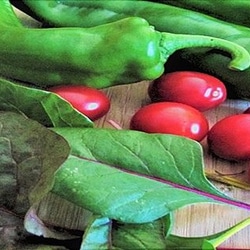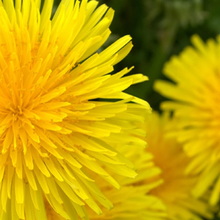The Myth: Beer makes a good fertilizer for your lawn and garden.
 |
The Facts
This myth has been circulated among gardeners for well over a hundred years. No one is quite sure when or where exactly it got started.
In 1890 Peter Henderson whose was known as "the father of horticulture and ornamental gardening" in the United States recommended that refuse hops from breweries made an excellent fertilizer. This is one possibility of how the beer myth began. hy beer? It was thought that beer offers vitamins and minerals that could benefit plant growth. It was theorized that beer fed beneficial microorganisms that live in the soil.
Beer contains water, carbon dioxide, ethanol (alcohol), a variety of carbohydrates (sugars), and a small amount of proteins. Will these ingredients in the amounts found in beer really benefit in plant growth and development?
An experiment was set up in a university laboratory.
The test was set up with hydroponic conditions (in order to rule out any factors that soil might play in the test). Buddleia (butterfly bush) was the plant of choice for the test. Three different beers were chosen for the test; Michelob Light, Guinness and an alcohol-free beer, Sharps. The beer was added to the water along with a low concentration a liquid fertilizer such as might be found in a garden's soil. Six plants were grown in each type of beer.
The results were very clear, alcohol is bad for plant growth, beer with alcohol is bad for plant growth, and beer without alcohol is bad for plant growth. The plants that were grown without beer and only the same amount of fertilizer did much better than all of the plants grown with beer.
As far as the theory of beer adding yeast to your garden soil is baseless; yeast is readily available to your garden from plenty of other sources.
Pull up a chair, grab an icy mug and treat yourself to a cold beer if you like, but don't waste your money pouring it on the garden.
The Myth: Adding coffee grounds to your plants will encourage growth.

The Facts
Most organic gardeners agree that adding coffee ground to your plants is a "good thing. There is little published information as to how the ground should be applied. Coffee grounds are organic and will break down just as compost does. When a living thing dies, it gives back the nutrients is has stored during its lifetime. Coffee grounds contain 2% nitrogen and less than 1% each of phosphorus and potassium.
Researchers have discovered that these little bits of organic material can indeed affect plants. In fact coffee ground can affect different plants in very different ways. For example lettuce seems to benefit from coffee grounds. It seemed to have little effect on alfalfa. Tomato plants were negatively affected by application of grounds. This effect seemed to be due to an ingredient in coffee grounds that acts as an allelopathic chemical, which inhibits the growth of some plants. Fresh coffee grounds can tie up nitrogen that the plant might otherwise take up.
Sprinkling coffee grounds on the soil surface probably won't hurt anything; but expecting it to change the soil pH without mixing it into the soil probably won't happen. However if you do mix it into the soil could inhibit root growth due to the allelopathhic chemical factor depending on the plant. Do you want to take that chance?
The Myth
Placing eggshells in the soil around plants are beneficial to the plants.

The Facts
There are two different ways eggshells are introdued to soil. The first is to crush the eggshells and work them into the soil at the base of the plant.
The second is to boil the eggshells and use the water on the plants. Both approaches are based on the fact that eggshells contain high amounts of calcium.
To test the second theory, an eggshell was boiled in distilled water. Distilled water was used to rule out anything that might be present in tap or rain water. The water was sent to the Analytical Lab at The University of Minnesota for testing.The test showed that the water contained five nutrients. The first was sodium, in very small amount which probably wouldn't help or hurt a plant. Two additional elements present were phosphorus and magnesium. While these are beneficial to plants, the amounts were so low that neither would be benefiecial. The last two were potassium and calcium - 4 mg of each. Both of these are really beneficial to plants, The 4 mg is a relative small number but the test was done with only one eggshell, if you boiled multiple eggshells th amount of phosphorous and magnesium would increase.
I have personal experience with this theory. The tomatoes that I grew in containers were showing Blossom End Rot (BER). One of the causes of BER is said to be a calcium deficiency. My tomatoes that were growing directly in the ground had no BER. I theorized that the minerals in the soil used in the container were being washed away. I crushed some eggshells, boiled them and let the mixture set for 4-5 days. I began to apply this water to the container tomatoes once a week. No more BER!
By no means was my experiment a scientific test but for what it's worth, it worked for me.You be the judge but I think this myth might have some merit.
A garden tip, placing crushed eggshells around the base of plants that attract slugs will repel them.
The Myth: Cover newly pruned areas on trees with tar, or paint
 |
| What NOT to do |
The Facts
Most pruning paints or sealers are petroleum-based. Think about it: would you put something petroleum based on a cut on your body? Setting aside the issue of the particular substance used, sealing a new cut on a tree can actually contribute to infection. In about half of the situations where wound dressings are used, the tree's heartwood decays faster than it would have without the application. The paint or tar holds moisture near the new wound, which helps the various fungal organisms grow.
It's important to recognize that trees do not heal. Instead, they isolate damage through formation of suberized (conversion of the cell walls into tissue) wood that physically and chemically repels invasion. Callus develops at the edge of the wound and gradually expands towards the center. This wound wood remains for the life of the tree; bark does not regenerate itself the same way our skin does.
The bottom line, don't apply anything. The tree will heal itself.
I expect some of you might disagree with these findings. However remember that this research was done in reputable university labs under controlled conditions and each of us will draw our own conclusions.

















